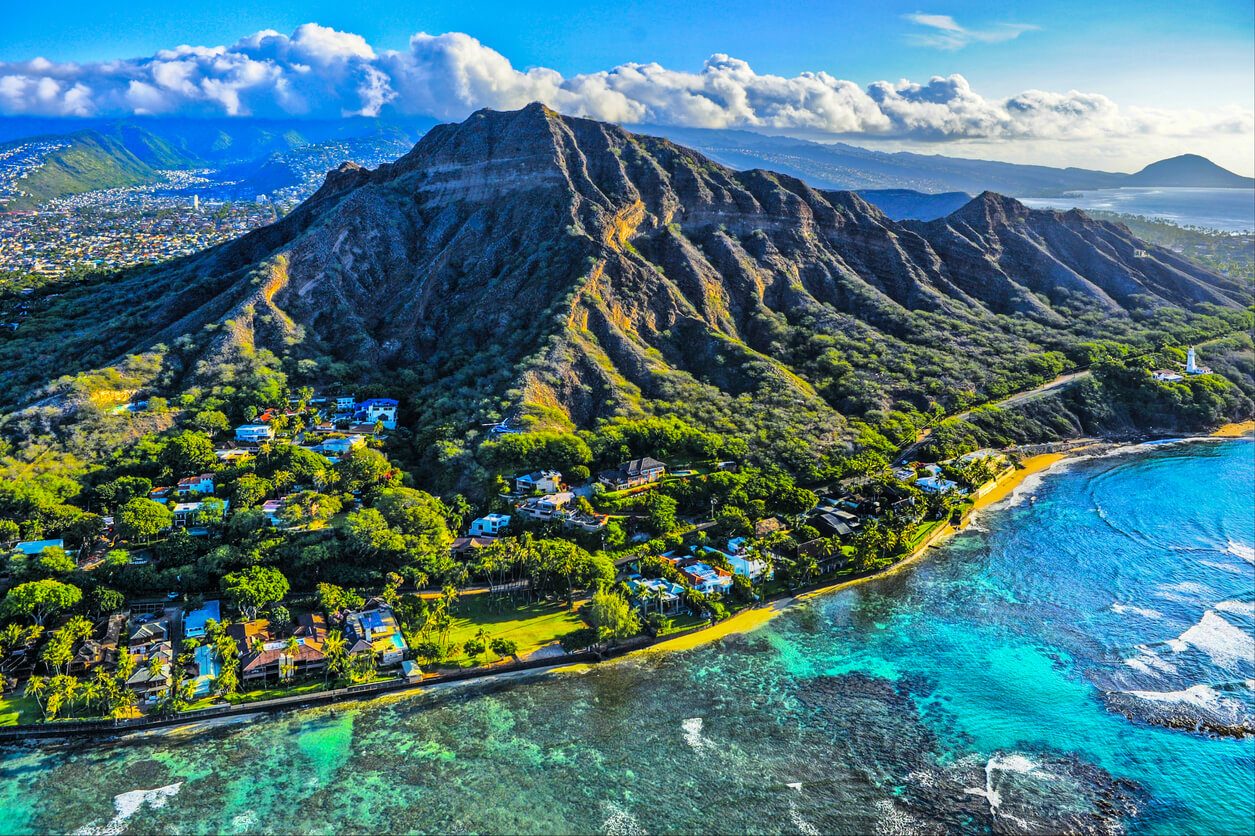When to Visit Hawaii for Perfect Weather Conditions? This is a question that many travelers ponder as they plan their dream getaway to the Hawaiian Islands. With its stunning landscapes, vibrant culture, and endless opportunities for adventure, Hawaii offers something for everyone. However, understanding the best times to visit can significantly enhance your experience, allowing you to take full advantage of the islands’ natural beauty and favorable weather.
>>>Read more: Don’t Leave Home Without These 15 Items for Your Hawaii Trip
Understanding Hawaii’s Climate
Hawaii’s climate is characterized by warm temperatures and gentle trade winds, making it a year-round destination for tourists. However, there are nuances to consider when determining the perfect time to visit.
Tropical Climate
Hawaii experiences a tropical climate, which means that while temperatures tend to remain consistent throughout the year, rainfall can vary significantly from one season to another. This climate contributes to the lush landscapes and diverse ecosystems found across the islands.
The average temperature ranges from the low seventies during the winter months to the mid-eighties in the summer. Visitors can expect pleasant weather regardless of the time of year they choose to visit, but knowing when to expect rain can make or break a vacation.
Rainy and Dry Seasons
Hawaii has two main seasons: the wet and dry seasons. The dry season runs from April to October, while the wet season extends from November to March. During the wet season, some areas like the windward coasts of Kauai and the Big Island receive significant rainfall, while leeward sides remain relatively dry. Conversely, during the dry season, rainfall decreases dramatically, providing optimal conditions for outdoor activities.
Understanding this seasonal variation is crucial for choosing the right time to visit. If you’re planning a beach-focused vacation with plenty of sunbathing and water sports, the dry season may be ideal.
Temperature Variations Across Islands
One fascinating aspect of Hawaii is the varying weather conditions across its islands. Each island has its unique microclimate influenced by topography, elevation, and geography. For instance, while the coastal regions typically enjoy sunny skies, the mountainous areas can be significantly cooler and wetter.
Kauai, known as the “Garden Isle,” is famous for its lush greenery, but it also tends to be one of the wettest islands. Meanwhile, Maui boasts a more diverse climate, where both wet and dry zones exist within close proximity. When planning your trip, it’s essential to consider the specific island you’ll be visiting to ensure you’re prepared for the local weather conditions.
Seasonal Highlights in Hawaii
Each season in Hawaii brings its own charm and attractions, making it a destination worth visiting anytime. However, certain months offer unique experiences that enhance your overall enjoyment.
Spring (March to May)
Springtime in Hawaii is often regarded as one of the best times to visit for perfect weather conditions. The temperatures are mild, the crowds are smaller, and the islands burst into bloom.
During these months, you can witness nature’s beauty in full swing as colorful flowers blossom and landscapes come alive. It’s an excellent time for outdoor activities such as hiking, snorkeling, and whale watching. The ocean is often calm, making it ideal for swimming and exploring marine life.
Spring also heralds various cultural festivals on the islands, allowing visitors to engage with local traditions and heritage. The Merrie Monarch Festival, held in Hilo, features hula competitions and showcases the rich cultural tapestry of Hawaii.
Summer (June to August)
Summer is peak tourist season in Hawaii, and for a good reason. With longer days and warm temperatures, visitors flock to the beaches for a taste of paradise. However, the increased demand can lead to crowded attractions and higher prices.
If you’re considering a summer trip, planning ahead is crucial. Early morning hikes to catch stunning sunrises are popular, as are sunset beach picnics. The ocean temps rise, creating warm waters perfect for surfing and snorkeling.
While summer offers great weather, it’s worth noting that the leeward shores tend to be drier than the windward sides. If you’re looking to escape the humidity, spending time on Maui’s or Oahu’s west coasts may provide a comfortable environment.
>>>Buy now: Pixel Style Yellow Sunflowers In The Form Of Square Pattern Hawaiian Shirt
Fall (September to November)
Fall is a fantastic time to visit Hawaii for those seeking pleasant weather and fewer crowds. Temperatures remain warm, but the influx of tourists starts to dwindle, resulting in shorter lines at popular attractions.
The fall season also offers various cultural events and festivals, including the Aloha Festivals, which celebrate Hawaiian culture with parades, music, and dance. This intimate atmosphere allows visitors to immerse themselves in local customs and connect with residents.
Moreover, September marks the tail end of hurricane season in the Pacific. While Hawaii rarely experiences severe storms, booking a trip during this transitional period can offer lower accommodation rates without sacrificing idyllic weather conditions.
Winter (December to February)
Winter might not be the first choice for visitors seeking perfect weather, but it still holds incredible value. Although temperatures can dip slightly, Hawaii remains temperate compared to much of the mainland U.S.
Winter is also prime whale-watching season, as humpback whales migrate to the warmer waters surrounding the islands. Thousands of visitors flock to the shores to witness these majestic creatures, particularly off the coasts of Maui.
Additionally, the holiday season brings festive celebrations across the islands, complete with luaus, food festivals, and Christmas parades. Experiencing Hawaii’s unique blend of holiday traditions can provide a memorable twist to your vacation.
Activities and Events to Consider
When selecting the best time to visit Hawaii, it’s important to align your travel dates with activities and events that interest you.
Outdoor Adventures
Outdoor enthusiasts will find Hawaii brimming with opportunities for adventure, from hiking to diving. Certain times of the year may present unique conditions for different activities.
For example, if you’re interested in hiking, spring and fall tend to feature milder weather, making trails more accessible. Summer may bring hotter temperatures, so early morning or late afternoon hikes are advisable.
Water sports like surfing benefit from seasonal swells. Winter months often present larger waves on the north shores, attracting surfers from around the world. Conversely, summer’s calmer waters suit paddle boarding and snorkeling perfectly.
Cultural Experiences
Delving into Hawaii’s rich history and culture is a must for any traveler. Aligning your visit with local festivals or events can enhance your understanding and appreciation of the islands.
The Merrie Monarch Festival in spring celebrates traditional hula and arts, giving visitors an insight into the cultural significance of these practices. Likewise, the Aloha Festivals in fall showcase the spirit of Hawaii through parades and artisan markets.
Engaging in these events allows travelers to forge deeper connections with the local community and better appreciate the islands’ heritage.
Wildlife Watching
If observing wildlife is high on your agenda, timing your visit appropriately can yield remarkable encounters. Whale watching peaks between December and March, allowing visitors to see humpback whales breaching and engaging in playful behavior.
Birdwatching is also popular, particularly in spring when migratory species return to the islands. The diverse ecosystems of Hawaii are home to numerous unique bird species, and keen observers can spot them during hikes or leisurely walks.
Timing your trip to coincide with these natural phenomena can elevate your adventure and create lasting memories.
FAQs
What is the best month to visit Hawaii for good weather?
The best months to visit Hawaii for good weather are typically from April to June or September to November. During these months, temperatures are warm, and rainfall is generally less frequent.
Is it always warm in Hawaii?
Yes, Hawaii enjoys a warm tropical climate year-round. However, temperatures can vary slightly based on elevation and location, with coastal areas being warmer than mountainous regions.
Does Hawaii have a rainy season?
Yes, Hawaii experiences a rainy season from November to March, particularly on the windward sides of the islands. However, leeward areas tend to remain drier during this time.
Are there any natural disasters I should be aware of when visiting Hawaii?
While Hawaii is generally safe for travelers, it is essential to stay informed about potential natural disasters such as hurricanes and volcanic eruptions, especially during the hurricane season from June to November.
How do I know what to pack for my trip to Hawaii?
When packing for Hawaii, consider the activities you plan to engage in and the expected weather. Lightweight clothing, swimwear, and sunscreen are essential year-round, while a light jacket may be useful during cooler evenings or hikes in higher elevations.
Conclusion
When to Visit Hawaii for Perfect Weather Conditions? The answer depends largely on your personal preferences and the type of experiences you’re seeking. Whether you prefer the blossoming beauty of spring, the vibrant energy of summer, the cultural richness of fall, or the unique attractions of winter, each season offers its own unique charm.
By understanding Hawaii’s climate, seasonal highlights, activities, and events, you can tailor your visit to coincide with your interests, ensuring a memorable experience in paradise. Ultimately, whether basking in the sun on a pristine beach or embarking on a thrilling adventure, Hawaii promises unforgettable moments regardless of when you choose to explore its enchanting landscapes.







